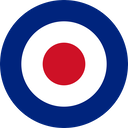Reluctant Poster
Tech Sergeant
- 1,737
- Dec 6, 2006
The Swede Vejtasa claims are debunked by Lundstrom in his book "The First Team"View attachment 717103Ouch.
Too bad FAA didn't have SBDs, that was without such bad habits, and was maneuverable
He could have done to the ME-109s what Swede Vejtasa did in his Dauntless against Zeros


